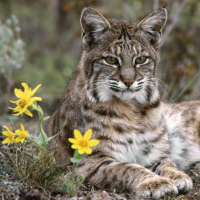California Extends Bobcat Trapping Ban to the Entire State

California was not among the Top 10 states for killing bobcats (lynx rufus) in 2011-12, according to numbers gleaned this year by Petersen’s Hunting from the National Fur Harvest Database, and now it may slip to last place.
On a 3-2 vote, the California Fish and Game Commission extended a limited 2013 ban on trappers killing bobcats—in or near state and national parks or other wildlife refuges—to include the entire state.
Take Part, a social action platform, said California became the first state in the nation to totally ban bobcat trapping for sport and profit but Courthouse News Service said 10 states have done it. Either way, the decision will put an end to a lucrative business that supplied pelts valued at up to $700 apiece to fur markets in China, Russia, Greece and elsewhere.
Based on current guesstimates of bobcat populations, state law lets bobcat trappers kill up to 14,400 bobcats between November and January. But they don’t really know how many bobcats are in California. The state recorded 1,639 takes in 2013-14, but that was more than three times the total in 2010-11.
People have been trapping bobcats for more than a century without much of a fuss being made. But a combination of heightened awareness (ht Cecil the Lion) and overeager trappers with new technology have made it an issue. Take Part said trappers use “scent pheromones and even battery-powered fake birds to entice bobcats beyond the park border,” à la the Minnesota dentist and Cecil in Zimbabwe.
The 2013 legislation grew out of the virtual disappearance of bobcats from a community near Highway 62 that borders on Joshua Tree National Park, just as people began finding traps on their property.
When one trapper was confronted, he described putting out 30 traps and catching five bobcats one night. An abstract sporting and commercial activity, mostly conducted out of sight, was suddenly in the spotlight and restricted within the year.
Hector Barajas, spokesman for the California Trappers Association, told Reuters that the state has around 100 licensed recreational and commercial bobcat trappers. Bobcats are found in North America, ranging from Canada to northern Mexico, and across much of the continental United States. They are listed in Appendix II of the Convention on International Trade in Endangered Species of Wild Fauna and Flora (CITES), which means they aren’t endangered, but need to be closely monitored.
California’s Department of Fish and Wildlife Director Chuck Bonham is against the ban. “Bobcats are the most widespread and adaptive carnivores in the state next to coyotes,” Bonham reportedly told the commission. “There is no evidence that a ban on bobcat trapping is needed to protect bobcat populations.”
When Governor Brown signed the bobcat bill (pdf) in 2013, he wrote: “In order to ensure appropriate implementation of this Act, I am asking the Legislature to work with my Department to secure funding to survey our bobcat population.”
That didn’t happen.
–Ken Broder
To Learn More:
California Bobcats Will Avoid Cecil’s Fate Thanks to New Baiting Ban (by Taylor Hill, Take Part)
California Protects Bobcats from Trappers (by Nick Cahill, Courthouse News Service)
California Bans Trapping of Bobcats amid Protests over Cruelty (by Louis Sahagun, Los Angeles Times)
California Wildlife Managers Approve Ban on Bobcat Trapping (by Laura Zuckerman, Reuters)
Where Have All the Bobcats Gone? (by Susan Valot, KCRW)
State Bans Coyote-Killing Contests, but Not Coyote Killing (by Ken Broder, AllGov California)
- Top Stories
- Controversies
- Where is the Money Going?
- California and the Nation
- Appointments and Resignations
- Unusual News
- Latest News
- California Forbids U.S. Immigration Agents from Pretending to be Police
- California Lawmakers Urged to Strip “Self-Dealing” Tax Board of Its Duties
- Big Oil’s Grip on California
- Santa Cruz Police See Homeland Security Betrayal in Use of Gang Roundup as Cover for Immigration Raid
- Oil Companies Face Deadline to Stop Polluting California Groundwater





